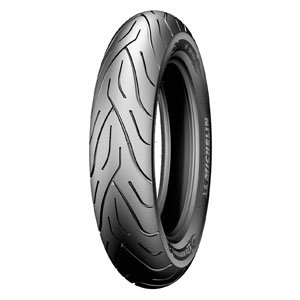Top Rated Motorcycle Rain Tires – 7 All Weather Options
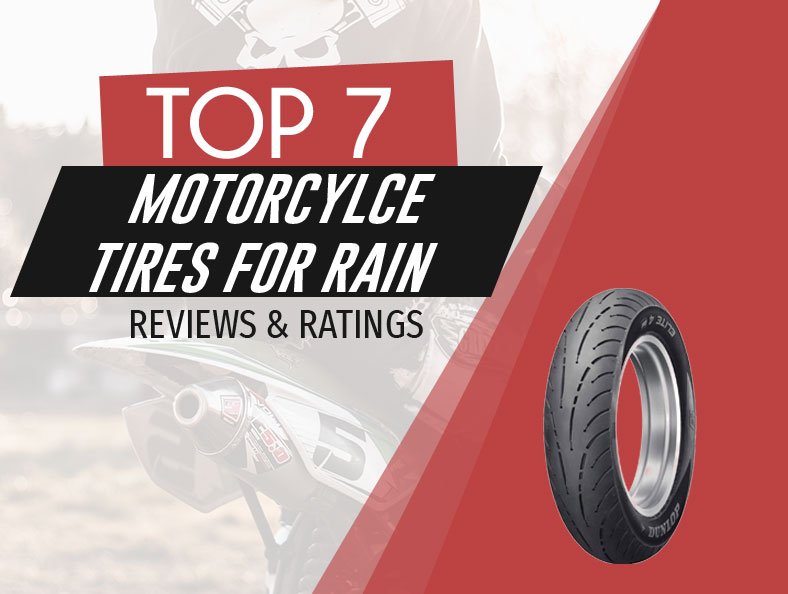
Road Racerz is proudly supported by our readers. Products purchased through links on our site may provide us a commission. Learn More
Motorcycle riding is always fun, but it can also be dangerous. One of the trickiest things to deal with is changing weather that presents different riding conditions.
Although it’s an adventure, riding in the rain can be extremely dangerous and even life-threatening. The roads become slippery, and your vision also reduces due to light reflection. Add some wind to the picture, and you’re in for a surprise.
For this reason, it’s essential to have the top motorcycle tires for rain. These are made specifically to perform in the slippery conditions, offering enhanced grip and water dispersion.
Stay tuned to discover the best tires to use in the rain, as well as a little buyer’s guide to help you choose one.
7 Highest Rated Motorcycle Tires for Rain Reviewed
| PRODUCT | FEATURES | |
|---|---|---|
Dunlop 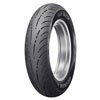 | Dunlop Key Features: For smooth and wet roads, even wear and long mileage Rim Diameter: 16 inches | Check Price |
Pirelli 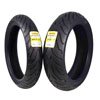 | Pirelli Key Features: Increased stability on wet roads, stylish design Rim Diameter: 17 inches | Check Price |
Dunlop 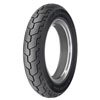 | Dunlop Key Features: More grip and balance, reduced cupping Rim Diameter: 16 inches | Check Price |
MMG 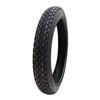 | MMG Key Features: Special rubber compound, enhanced stability Rim Diameter: 18 inches | Check Price |
Shinko 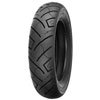 | Shinko Key Features: Stable and long-lasting, thick tread Rim Diameter: 16 inches | Check Price |
Michelin 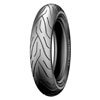 | Michelin Key Features: Great traction, DOT approved, SRT and ADT technologies Rim Diameter: 17 inches | Check Price |
Metzeler 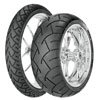 | Metzeler Key Features: Smooth and comfortable performance, low road noise Rim Diameter: 21 inches | Check Price |
Dunlop – Multi-Tread
Dunlop Elite 4 rear tire is made using the brand’s MT Multi-Tread technology. The technology is combined with a long-wearing compound in its center, as well as along with a lateral-grip compound that is on each shoulder.
The construction provides increased mileage without taking away from its handling abilities. The new tread pattern offers outstanding performance on wet surfaces, regardless of how smooth they are.
It’s available in bias-ply and radial construction, fitting cruisers, tourers, and standard bikes. It provides even wear along with an excellent grip that’s always important when riding in wet conditions.
Also, this one is quiet, producing less road noise so that your riders are always comfortable.
This is especially important when it comes to long-distance trips.
PROS
- For smooth and wet roads
- Even wear and long mileage
- Available in two different constructions
CONS
- Its outer parts might be too soft for some riders
Pirelli – Great for Street Sport Touring
This is a set of rear and front tires, although both are available for separate purchase as well. Still, they’re recommended to be used together because one compliments the other.
Pirelli Angel ST is made of environmentally friendly compounds with functional tread design. It’s designed with the patented 0° steel belt radial structure, providing increased stability on both wet and dry surfaces.
It’s meant for sport and super-sport tourers, providing superior performance, comfort, and style. On top of that, the Extended Mileage Sport (EMS) design adds more to its comfort and attractiveness.
Both front and back models are W-rated for speeds of 168+ MPH. As such, they’re suitable for a wide range of different bikes and riding styles.
PROS
- Stylish design
- Increased stability on wet roads
- Long-lasting and durable
CONS
- Some people received old tires
Dunlop – Computer-Optimized
Dunlop D402 is Harley-Davidson approved – the only model approved for its touring bikes. It’s built with a three-ply polyester casing, featuring two fiberglass belts. As such, the D402 provides the great load-carrying ability and increased stability.
It features a computer-optimized tread profile that provides more grip and enhanced stability. On top of that, it has an offset center groove, giving you more confidence, especially when it comes to steel-grated bridges and rain grooves.
It’s built to last, so you’ll notice reduced cupping and even wear. As such, Dunlop D402 is ideal for commuters and all other riders who are frequently on their bikes.
It’s available as a set, although you can buy both front and back models separately, depending on what you need. Again, it’s advised that you use them together since that’s when they perform the best.
PROS
- Even wear
- More grip and balance
- Reduced cupping
CONS
- A bit tricky to mount
MMG – Great for Scooters
This is a stylish model that’s going to attract the eyes of every motorcycle enthusiast. Much like all tires, you can buy a rear and front separately or in pairs. Both are DOT approved and street-legal to use throughout the United States of America.
It’s a tube-type tire with a rim size of 18’’ and two plies sidewall. The unique rubber compound gives it an even wear abilities along with an excellent grip. Its construction, along with the quality of materials, makes it an ideal choice if you’re often riding your scooter in the rain.
Another thing that adds to its stability when it comes to riding on wet roads is the distinctive tread pattern.
It gives it the attractiveness and style, but also the ease of handling and precise stability.
PROS
- Special rubber compound
- Enhanced stability
- Stylish
CONS
- Not the most long-lasting
Shinko – Tubeless
Shinko is one of the biggest names in the industry, so you’re unlikely to go wrong with its tires. This set is H-rated tubeless and one of the best options for both wet and dry roads.
It’s an aramid-belted tyre that’s meant for touring and cruising, although it fits other motorcycles as well. This one is 777 H.D. with the reinforced carcass for durability and performance.
It’s designed to deliver performance and mileage at an affordable price. Plus, its thick, staggered tread pattern works great in wet conditions, providing outstanding grip regardless of how smooth the surface is.
This is a rear motorcycle tyre, but keep in mind that front models are available as well. They’re the best when used in pair because they’re designed to work together, especially in wet weather conditions.
PROS
- Stable and long-lasting
- Thick tread
- Great grip
CONS
- Not for rough roads
Michelin – Ideal Wet Grip
Michelin is another big name in the industry that’s been around for ages. Commander II front motorcycle tire is made of special rubber compounds, providing great grip and handling without taking away from its durability.
The square bead-wire package improves ease of installation, casing rigidity, and handling. Also, Amplified Density Technology provides more rigid casing and a highly dense tire. It helps deliver better feedback and handling regardless of the road and weather conditions.
It also features Silica Rain Technology that integrates silica into the tread compound. Its tread pattern is designed to deliver even wear and longevity along with stability and ease of maneuverability.
It has a high-density, more rigid carcass and aramid fiber crown ply for enhanced resistance and lightness at high speeds.
PROS
- Suitable for wet and dry weather conditions
- SRT and ADT technologies
- Even wear and longevity
CONS
- Not as compatible with many motorcycle brands
Metzeler – Ideal for Cruisers
If you ride a cruiser, you probably know the struggle of riding in the rain with inadequate tires. If that’s the case, we suggest you give Metzeler ME880 a chance as it’s among the best options for cruisers.
It’s available as front and rear, and you’re best off using them together. Much like all other tires, these complement one another, offering the best performance when used in pair.
This is the first radial tire for cruisers, featuring the latest 0° steel belt technology. It’s built to last a long time (read about how long they typically last), handling loads of cruisers with custom frames.
The front one features a rounded tread profile, offering neutral, smooth steering.
The rear one features a round tread profile as well, but with a larger contact patch for a softer ride and better traction.
Both feature the computer-designed tread pattern along with offset grove alignment.
PROS
- Even wear
- Low road noise
- Smooth and comfortable performance
CONS
- A bit tricky to mount on
What to Consider When Buying a Motorcycle Tire for Rain?
The Type of Motorbike Tire Tread for Rain
You should know that there are plenty of tread patterns and designs. Choosing the right type of tread based on your bike and riding style is critical.
Those with large knobby treads are usually best for off-road adventures and loose dirt. Such tires don’t have to best grip on smooth pavement and tend to wear rather quickly.
For riding in the rain, you’re better off using street tires that have a less aggressive tread pattern. They have rain grooves that channel water away from the center in order to improve grip. However, make sure to check if the particular tyre you’re interested in is suitable for wet roads.
More Reading: Top Rain Gear for Wet Weather
The Tire Pressure
You should check the pressure frequently. Ideally, it’s something you should check each time before you’re about to ride out.
It’s a matter of safety, so you should check the pressure cold. Tires warm up as you ride, which causes the pressure to rise. For this reason, you should check it at ambient temperature.
Checking pressure allows you to notice if something is wrong with your tyre. If there’s a loss of pressure, things could go south, and you could find yourself in a crash.

If Motorcycle Needs Tire Replacement
All tires need replacement at some point because they wear out. Rear tyres tend to lose their rounded profile because the tread center wears out rather quickly. Front ones wear more evenly, but they might develop cupping.
What you should do is check your tires for adequate tread depth. When it’s worn out, the tyre becomes dangerous to use regardless of the road conditions. You should replace it immediately after it wears down to the built-in indicators.
You should have new tires ready to replace the old ones before the old ones wear out completely. It makes the process much easier.
What Motorbike Parts Needs Inspection When Raining
Oil & Brake Fluid
Check that there’s no leakage when it comes to oil and brake fluid. Such leakage might not be a huge treat when the roads are dry. However, it can be extremely dangerous in wet conditions because the oil will mix with water, becoming very slippery.
Brakes
Brakes are critical components of your motorcycle regardless of the bike you have or the conditions you ride in. However, they’re even more vital during the rainy season because the roads are much more slippery when wet.
Check your brake pads for wear and tear. If you’re in doubt, you should consult your mechanic.
Tires
Checking the tread of your tires is critical because it’s the part that does all the water-channeling. Inspect if they wear down evenly, but make sure also to check the pressure and whether it’s suitable for your bike.
Over-inflated or under-inflated tyres are unsafe and might perform differently when the pavement is wet.
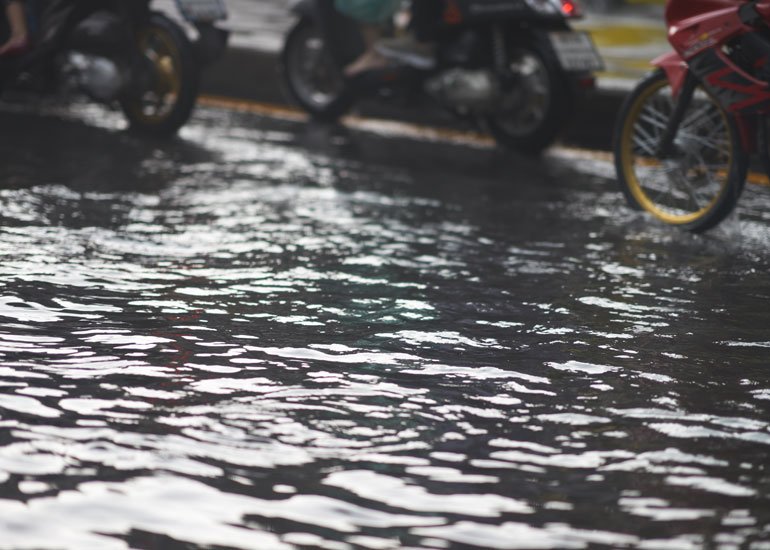
Be Prepared Always
Use Anti-Fog Treatments
There’s a risk of fogging almost always when the wet weather conditions last for a longer time. It happens during temperature difference and humidity, and it can make a simple ride rather dangerous.
For this reason, you should use anti-fog treatments for your helmet visor, goggles, and windshield. It’s meant to help you prevent these parts from fogging up.
Wipe the surfaces with the anti-fogging treatment before you get going. You might also want to consider a helmet with plenty of vents as they help with constant airflow.
If you notice the fogging is persistent and putting you in danger, pull over and wait for the conditions to improve.
Water-Resistant Clothes to Wear
The last thing you want when riding while it’s raining is to be soaking wet by the time you reach your location. For this reason, consider water-resistant clothing such as one-piece suits, pants, and jackets.
The most important thing is to have overlapping seams and zippers with flaps. You want to cover the seams and zippers because this is where water can easily get in.
Also, make sure that the cuffs on your jacket are long enough to cover your gloves. Some jackets have a hook-and-loop section that you can tighten around the glove for some added security.
It’s critical that you give this a good thought because wet clothes are uncomfortable to ride in. Plus, your reaction time and attention aren’t at the highest level when you’re uncomfortable. You might end up with a cold later on even if you make it home safe and sound.
View our collection of summer jackets.
Waterproof Boots & Gloves
You should have waterproof gloves and boots if you’re often riding in variable weather. These are built to deter water from reaching your skin.
Make sure that they fit you properly so that water cannot find the way in. They should be tight enough to keep the water out while remaining comfortable at all times.
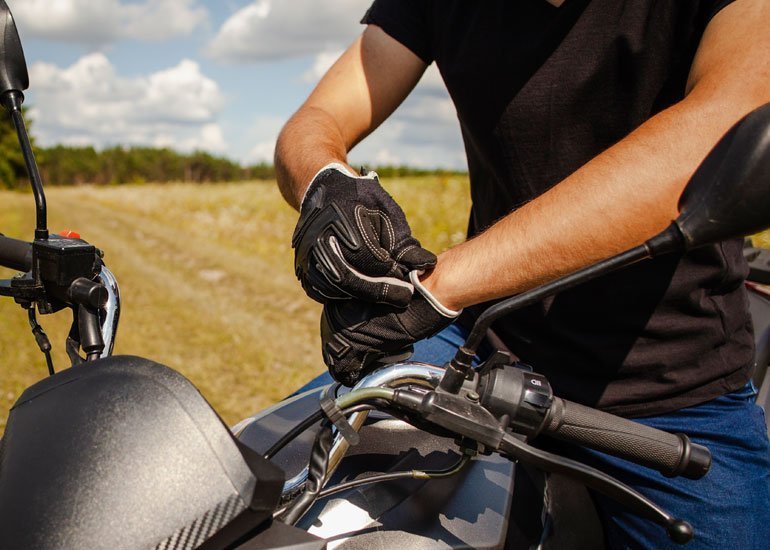
Always Prepare Additional Dry Clothes
You should always wear additional dry clothes if you’re going on a longer trip, or you know it might rain at some point during your commute.
Frequently Asked Questions
Are summer motorcycle tires good in rain driving?
Both summer and winter/snow tires can be suitable for deriving in the rain, depending on their construction and tread pattern.
However, most summer tires work the best in dry conditions and can be quite dangerous if you come across a simple puddle. Make sure to check whether the summer tyres of your choice are suitable for these riding conditions.
Is riding a motorcycle in the rain bad?
Riding in the rain isn’t as bad as people think as long as you’re careful. In other words, you can ride, but make sure to avoid high speeds and sharp cornering.
Also, try not to go far. Avoid riding long-distance if the weather is bad unless you absolutely have to. Check your tires, brake and oil fluid, and brake pads.
Another thing to keep in mind is that riding during thunderstorms is extremely dangerous. You’re not as well-protected against lighting as car drivers.
Conclusion
It’s a certainty that you’ll have to ride different weather conditions at some point during your time as a motorcyclist. And although rain isn’t extremely dangerous, you should still take the matter seriously.
Riding in the rain without the right equipment such as motorcycle tires for rain, waterproof clothing, and fog-resistant gear will make your ride more dangerous. For this reason, consider all the right pieces for such weather conditions, especially if you’re going on a long-distance trip.
Hopefully, you found something that fits your needs in our list above. Use the information in our buyer’s guide as it can help you choose the best motorcycle tires for rain if you haven’t already.






